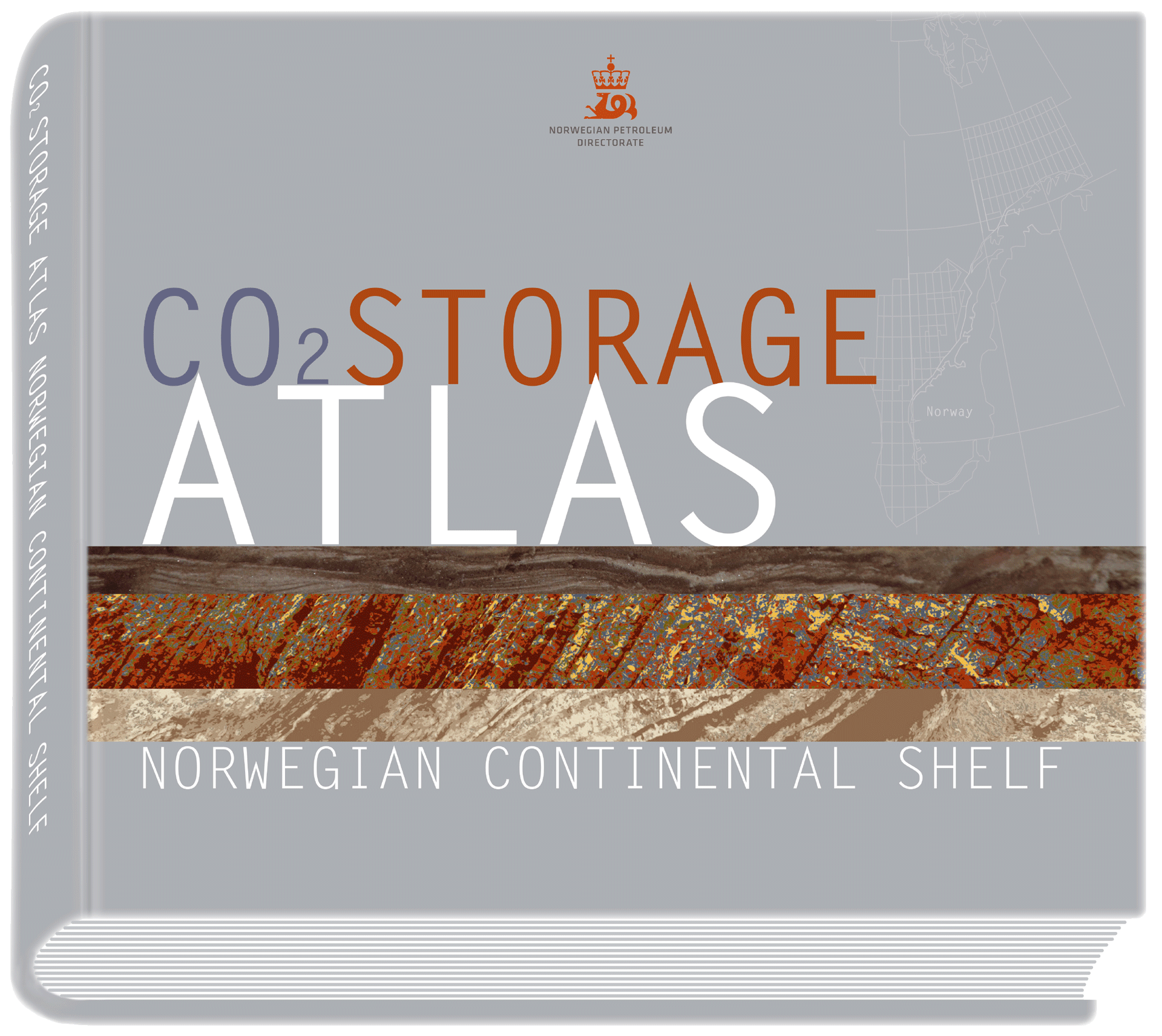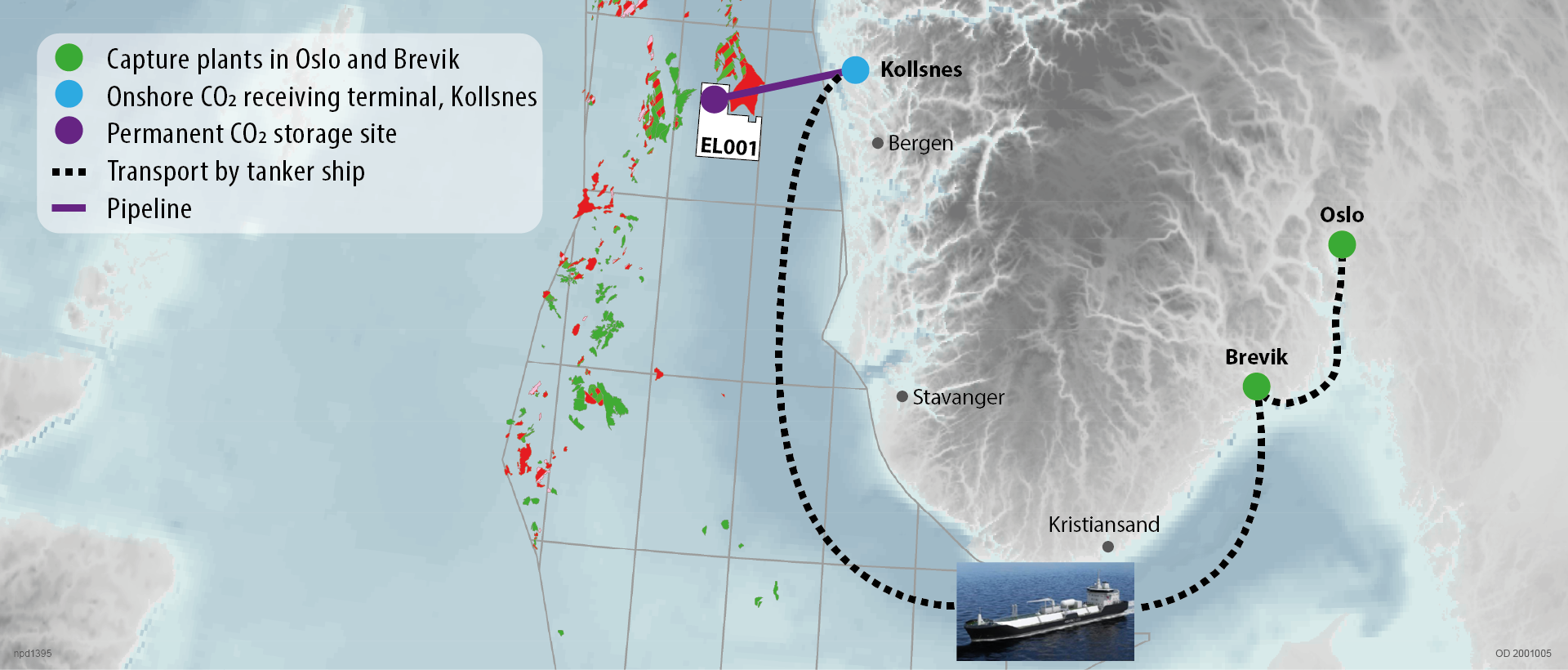Historic: Northern Lights has submitted a plan for development and operation (PDO) for the first CO2 storage project on the Norwegian shelf

5/15/2020 The Northern Lights Alliance, with operator Equinor and partners Shell and Total, has submitted a plan for an important part of the Norwegian full-scale project for transport and storage of CO2 on the shelf.
The Ministry of Petroleum and Energy (MPE) has received the plan, while the Norwegian Petroleum Directorate (NPD) will process the plan in accordance with the CO2 storage regulations.
Northern Lights is part of the first Norwegian full-scale project for transport and storage of CO2 - Carbon Capture and Storage (CCS). The project includes capturing CO2 from two industrial firms in Eastern Norway and transporting liquid CO2 to a terminal in Western Norway.
Permanent storage
CO2 will be captured from Fortum’s heat recovery plant at Klementsrud in Oslo and Norcem’s cement factory in Breivik in the municipality of Porsgrunn, and then transported by ship to an intermediate storage location at Kollsnes in the Øygarden municipality.
From there, the liquid CO2 will be transported in a 100-km long pipeline on the seabed and pumped into a reservoir at a depth of around 2,700 metres in the North Sea for permanent storage. The reservoir is in the Johansen Formation southwest of the Troll field.
The plan for the first phase is to inject 1.5 million tonnes of CO2 into the Johansen Formation. However, the plan includes flexibility to accommodate expanding the location’s capacity, and one important objective is to be able to offer the site as a storage location for CO2 from other European countries.
This means a huge step forward for the Government’s ambition of cost-effective full-scale CCS. A resolution on partial state funding of a Norwegian full-scale CCS project has the objective of demonstrating secure storage, and contributing to reducing the costs of future projects.
Unique project
This is an important and unique project for the climate and for industrial development, both for Norway and in an international perspective.
However, state support is a precondition for the project. In January 2019, Northern Lights was awarded the first exploitation licence for injection and storage of CO2. The awarded area is located near the Troll field in the North Sea.
In December of last year, drilling started on an exploration well to identify suitable reservoirs for CO2 storage. The exploration well was terminated in February this year.
“The well proved sandstone with properties well-suited for aCO2 storage location,” says assistant director for exploration in the NPD, Wenche Tjelta Johansen.
The reservoir is filled with water, and there has never been any oil or gas production from this part of the formation.
Many consider capture and storage of CO2 a precondition for achieving the emission targets in the Paris Agreement, which Norway has signed.
Experience
“In Norway, we have years of experience and good expertise when it comes to safe storage of CO2 under the seabed,” says Johansen.
CO2 has been removed from the Sleipner Vest gas and injected in the Utsira Formation since 1996. Around one million tonnes of CO2 are stored in the subsurface every year. Since 2007, around 700,000 tonnes of CO2 have also been stored each year on the Snøhvit field.
It is separated from the gas at the process plant at Melkøya before it is routed by pipeline down into a reservoir about 140 kilometres from land. Regular surveys are performed to monitor how injected CO2 moves within the storage location.
Dedicated storage atlas
The Norwegian Petroleum Directorate has mapped areas that are suitable for safe and secure long-term storage, an effort that resulted in a CO2 storage atlas for the Norwegian shelf.
Estimates indicate, in theory, that the reservoir volume on the shelf is sufficient to accommodate more than 80 billion tonnes of carbon dioxide, a volume equivalent to 1,000 years of current Norwegian CO2 emissions.

News article on government.no:
Updated: 2/10/2025